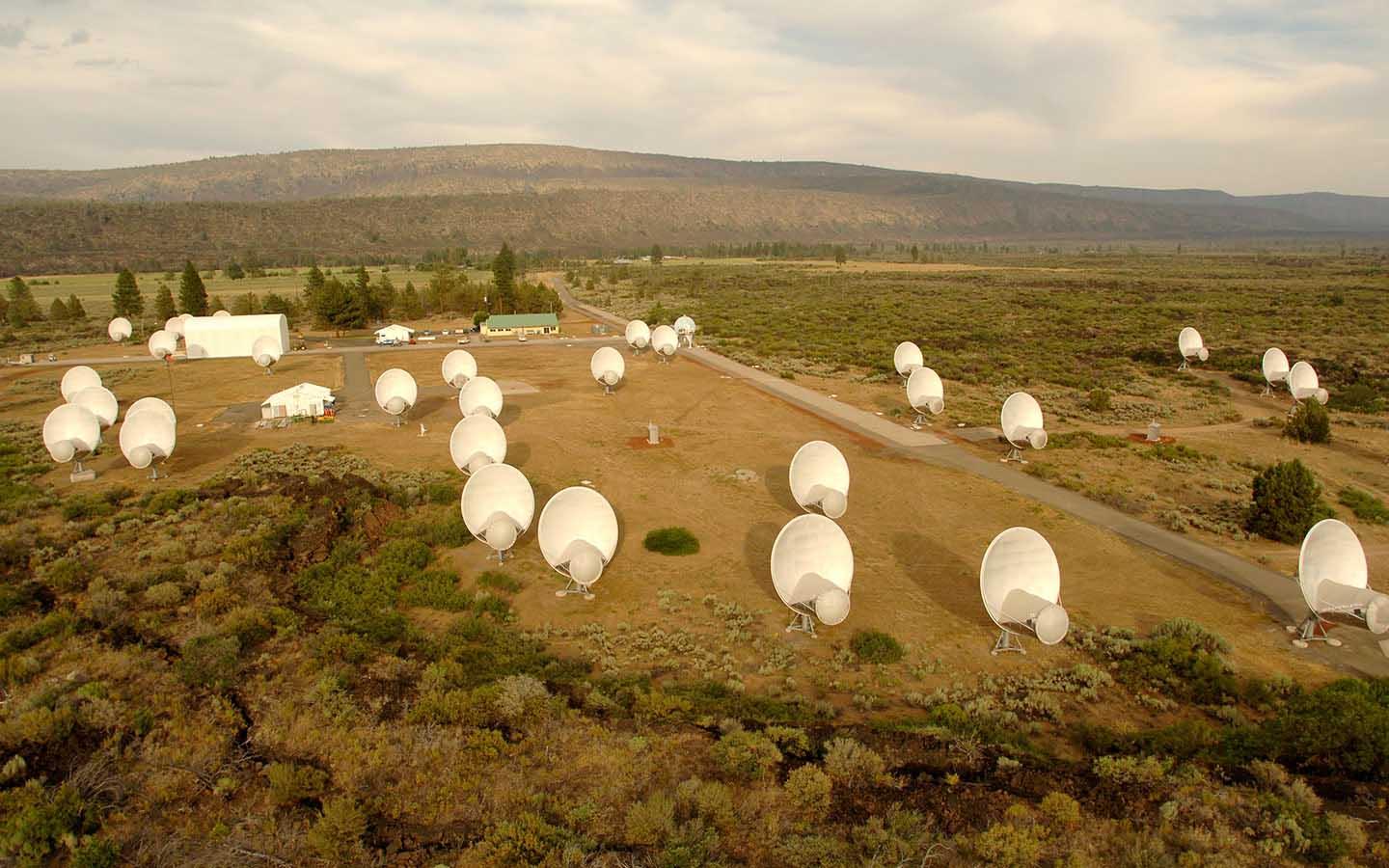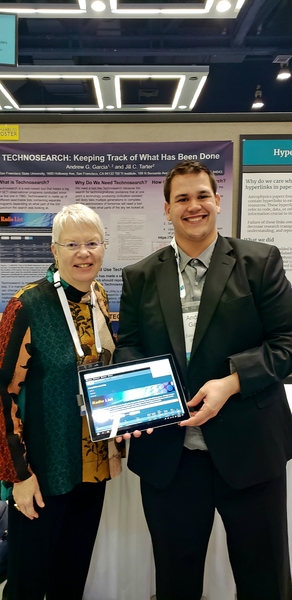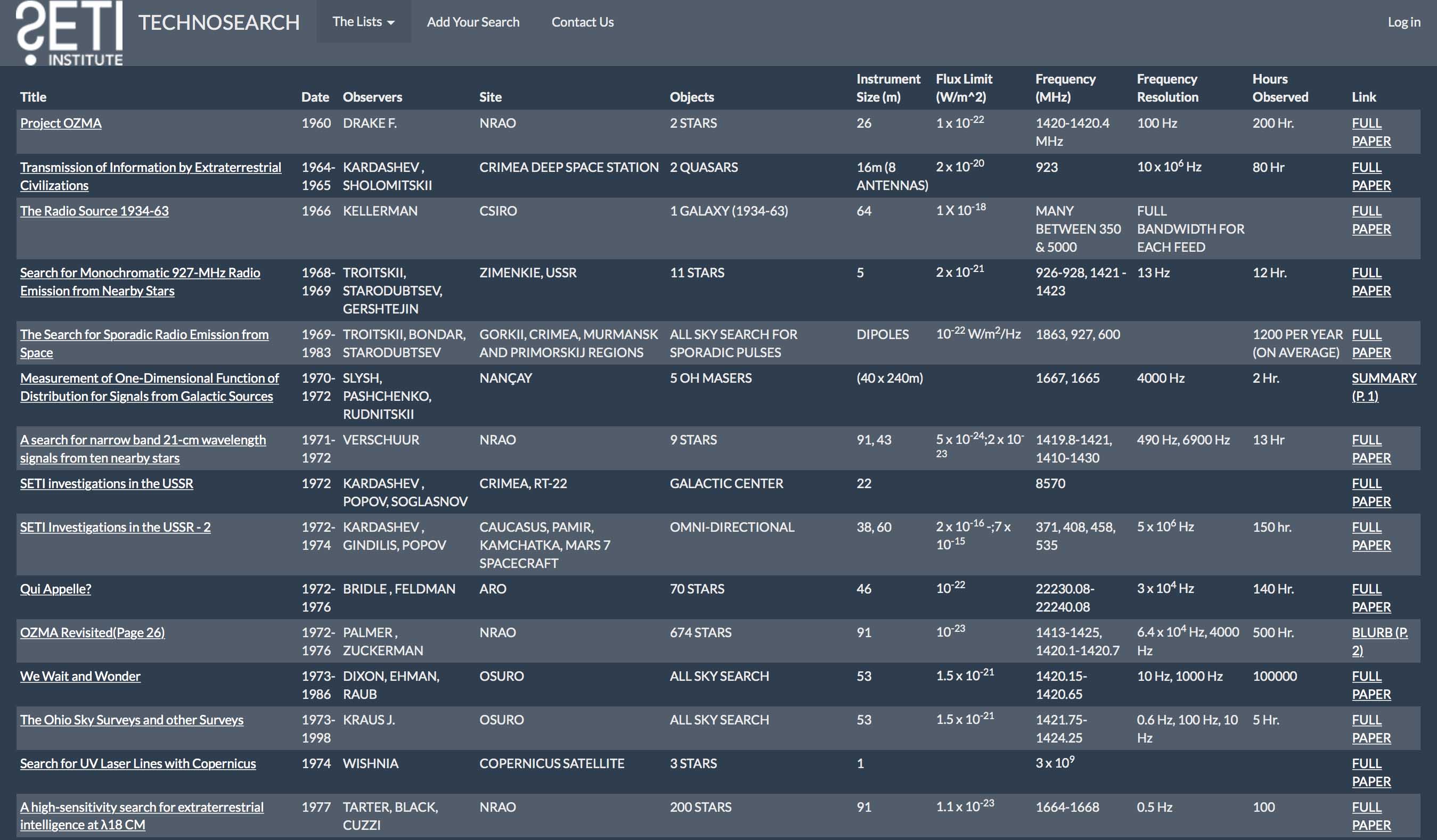A way for the SETI community to keep track of, and update, all SETI searches that have been conducted and the results.

January 9, 2019, Mountain View, CA – For the first time ever, scientists have developed a way for the SETI community to keep track of, and update, all SETI searches that have been conducted and the results. Jill Tarter, SETI pioneer and co-founder of the SETI Institute, has launched Technosearch, a new-web-based tool that includes all published SETI searches from 1960 until the present. The tool also allows users to submit their own searches and keep the database current.
According to Jill Tarter, “I started keeping this search archive when I was a graduate student. Some of the original papers were presented at conferences, or appear in obscure journals that are difficult for newcomers to the SETI field to access. I’m delighted that we now have a tool that can be used by the entire community and a methodology for keeping it current.”
Tarter developed Technosearch in collaboration with former Research Experience for Undergraduates (REU) interns, graduate students working with Professor Jason Wright at Penn State University and Andrew Garcia, SETI Institute 2018 REU student.

Andrew Garcia said, “I started helping Dr. Tarter with this project as a research opportunity during the summer. I’ve become convinced that Technosearch will become an important instrument for astronomers and amateurs interested in exploring the cosmos for indications of other technological civilizations. We can’t know where to look for evidence tomorrow if we don’t know where we have already looked. Technosearch will help us chronicle where and how we’ve looked at the sky. I would like to thank the NSF REU program and the CAMPARE program for their encouragement and support throughout this project.”
Technosearch tracks information including:
- Title of the search paper
- Name(s) of observers
- Search date
- Objects observed
- Facility where the search was conducted
- Size and sensitivity of the telescope used
- Resolving power of the instrument
- Time spent observing each object
- A link to the original published research paper
- Comments that explain the search strategy
- Observer notes
Technosearch includes sections for both radio and optical SETI. Currently this tool holds 102 Radio searches and 38 Optical searches, for a total of 140 different explorations.

Moving forward, it is hoped that the SETI community will collaborate to keep Technosearch up-to-date and accurate.
Since Frank Drake’s very first SETI search in 1960, professional and amateur astronomers around the world have been searching and hoping to find evidence of life, especially intelligent life, beyond Earth. One significant challenge for the SETI community has been keeping track of the hundreds of searches that have already been conducted. Technosearch should address this problem.
Technosearch will be presented at the 2019 Winter AAS meeting next week at the poster session on Wednesday morning January 9th, and it will be maintained by the SETI Institute at https://technosearch.seti.org/.
About the SETI Institute
Founded in 1984, the SETI Institute is a non-profit, multi-disciplinary research and education organization whose mission is to lead humanity’s quest to understand the origins and prevalence of life and intelligence in the Universe and to share that knowledge with the world. Our research encompasses the physical and biological sciences and leverages expertise in data analytics, machine learning and advanced signal detection technologies. The SETI Institute is a distinguished research partner for industry, academia and government agencies, including NASA and NSF.
Contact information
SETI Institute
Director of Communications
Rebecca McDonald
rmcdonald@seti.org
650-960-4526





